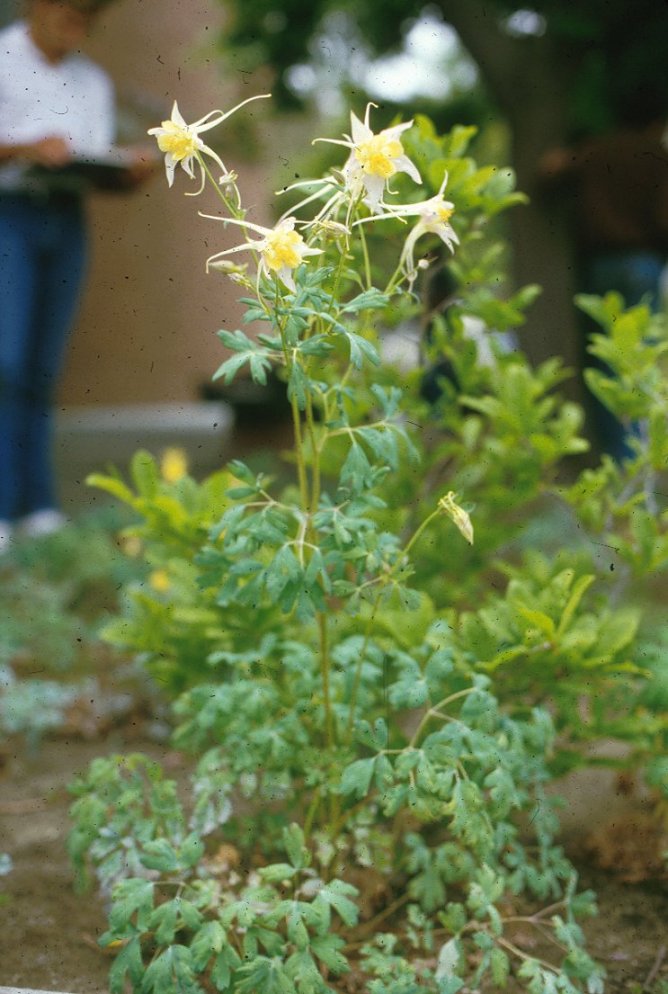| Botanical Name: Aquilegia chrysantha 'Yellow Queen' | |
| Common Name: Yellow Queen Columbine |

-
Anatomy
-
Culture
-
Design
Plant Type
Perennial
Height Range
1-3'
Flower Color
Yellow
Flower Season
Spring
Leaf Color
Blue Green
Bark Color
n/a
Fruit Color
n/a
Fruit Season
n/a
Sun
Full, Half, Shade
Water
Medium, High
Growth Rate
Moderate
Soil Type
Sandy, Clay, Loam, Rocky, Unparticular
Soil Condition
Average, Rich, Well-drained, Moist, Dry
Soil pH
Neutral, Basic
Adverse Factors
n/a
Design Styles
English Cottage, Meadow, Ranch, Woodland
Accenting Features
Showy Flowers
Seasonal Interest
Spring
Location Uses
Perennial Border, Raised Planter, Walkways
Special Uses
Cut Flowers, Naturalizing, Small Spaces
Attracts Wildlife
Hummingbirds
Information by: Stephanie Duer
Photographer:
Photographer:
-
Description
-
Notes
'Yellow Queen' is a cultivar of A. chrysantha, with large, upward facing, fragrant, bright yellow flowers with long, outward curving spurs. Flowers are generally a more solid and brighter yellow than those of the species. Blooms April to May. Foliage is blue-green and deeply lobed. With flowers, plants are about 2 to 3 feet tall and wide.
Grow in well drained, loamy soil in full sun to full shade, though will need more water in full sun situations. Deadheading will usually prolong the bloom season, and as they make lovely cut flowers, snip them off and tuck them in a vase while they are still fresh. Generally, columbine go dormant during the hottest part of the summer; they are also usually a short-lived perennial but are generous reseeders if planted where they are content. Hardy to USDA Zone 3. During blooming, they appreciate regular watering, but as they go dormant, reduce the frequency of irrigation.